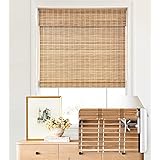Are you unwittingly sabotaging the sanctuary of your sleep space? Many homeowners and design enthusiasts meticulously plan their living rooms or kitchens, yet frequently overlook critical elements in the bedroom, leading to a less-than-optimal environment. The video above offers a quick visual guide to some common bedroom design mistakes; however, a deeper dive into these pitfalls reveals nuanced complexities and professional strategies for rectification. Understanding these errors is the first step toward crafting a bedroom that truly embodies comfort, functionality, and refined aesthetics.
Overlooking Strategic Furniture Placement and Spatial Planning
One of the most pervasive common bedroom design mistakes involves haphazard furniture placement, which can severely impede both flow and visual harmony. The bed, as the undeniable focal point, often gets positioned against a wall merely out of convenience rather than strategic design principles. Optimal placement considers the room’s geometry, the location of windows and doors, and the desired visual impact upon entry. For instance, placing the headboard on the longest solid wall often creates a sense of stability and grandeur, anchoring the room effectively.
Ignoring the principles of spatial planning leads to a cramped or disjointed feel, diminishing the room’s functional efficiency. Adequate clearances for pathways around furniture are paramount, with industry standards often recommending at least 30-36 inches for main thoroughfares and 24 inches for secondary routes. Furthermore, the size of furniture pieces must be proportionate to the room’s dimensions; an oversized dresser in a compact room, or conversely, diminutive pieces in a sprawling master suite, disrupt the visual balance and create an unsettling ambiance. This meticulous arrangement fosters a sense of order, directly influencing the room’s overall tranquility.
Insufficient and Unlayered Lighting Design
Relying solely on a single overhead fixture represents a significant misstep in bedroom illumination, frequently cited among common bedroom design mistakes. A truly functional and inviting bedroom requires a layered lighting scheme that addresses ambient, task, and accent lighting needs. Ambient lighting, typically provided by recessed lights or a central fixture, establishes the room’s general brightness. Task lighting, essential for reading or getting ready, comes from bedside lamps or focused sconces, strategically placed to minimize shadows.
Moreover, accent lighting, often achieved through dimmable wall wash lights or small spotlights highlighting artwork, adds depth and mood. The Kelvin temperature of light sources also plays a crucial role; warmer temperatures (2700K-3000K) promote relaxation and contribute to a cozy atmosphere, while cooler temperatures can disrupt circadian rhythms, impacting sleep quality. Studies consistently indicate that exposure to blue light in the evening can suppress melatonin production, underscoring the importance of selecting appropriate light sources and implementing dimmer switches for flexible control throughout the day and night.
Disregarding Scale and Proportion in Furniture Selection
The failure to correctly gauge the scale and proportion of furniture relative to the room’s dimensions is another pervasive error that undermines effective bedroom design. A common scenario involves selecting a king-sized bed for a modest bedroom, leaving insufficient space for other essential elements or comfortable movement. Conversely, a vast master bedroom can feel empty and uninviting if furnished with pieces that are too small or too few, failing to fill the expansive volume appropriately.
Expert designers understand that furniture should occupy approximately two-thirds of the available wall space without feeling cramped, allowing for visual breathing room. Consideration of vertical scale is equally vital; a low-profile bed in a room with soaring ceilings might appear lost, whereas a towering headboard in a standard-height room can feel oppressive. Adhering to these principles ensures a harmonious visual balance, fostering a comfortable and aesthetically pleasing environment.
Implementing an Incoherent or Unsuitable Color Scheme
A poorly chosen or executed color scheme can profoundly impact the bedroom’s mood and perceived size, making it a critical area where common bedroom design mistakes often occur. Opting for overly vibrant or clashing colors can create an agitated or restless environment, counterproductive to rest and relaxation. Conversely, a monochromatic scheme without varying textures or shades can appear stark and uninviting. Color psychology dictates that cooler, desaturated tones like blues, greens, and soft grays promote tranquility and calm, making them ideal for a bedroom.
The strategic application of accent colors is equally important; these should complement the primary palette without overwhelming it. Furthermore, the interplay of natural and artificial light with chosen colors must be evaluated, as paint colors can dramatically shift under different lighting conditions. Utilizing a cohesive palette that incorporates varied hues, tints, and shades, alongside thoughtful material choices, ensures the room feels both harmonious and visually stimulating.
Neglecting Effective Storage Solutions and Organization
Clutter is the nemesis of a peaceful bedroom, yet inadequate or poorly planned storage remains one of the most significant and common bedroom design mistakes. Without designated homes for clothing, accessories, and miscellaneous items, surfaces quickly become overwhelmed, creating visual noise and stress. Traditional dressers and nightstands are often insufficient for modern storage needs, especially in smaller living spaces. Smart storage solutions are imperative for maintaining a tidy and serene environment.
Incorporating custom built-ins, under-bed storage, or modular wardrobe systems can maximize vertical and horizontal space without sacrificing aesthetics. Integrated storage within headboards or benches also offers discreet functionality, preserving the room’s minimalist appeal. A well-organized bedroom not only looks better but also promotes mental clarity and reduces daily friction, contributing significantly to overall well-being. Prioritizing clever storage solutions is an investment in both your immediate comfort and long-term peace of mind.
Ignoring Ergonomics and Personal Functionality
While aesthetics are important, neglecting the ergonomic and functional needs of the inhabitants is a fundamental flaw in bedroom design. A common error involves selecting bedside tables that are either too low or too high relative to the mattress, making it awkward to reach for items or read comfortably. Similarly, inadequate clearance for opening closet doors or maneuvering around furniture compromises the room’s daily utility. Designing a bedroom should inherently involve a user-centric approach, considering individual habits and requirements.
For example, if one partner reads extensively in bed, a dedicated task lamp and a comfortable headboard are essential. If morning routines are shared, ensuring sufficient counter space and accessible storage around a vanity area becomes crucial. Thoughtful consideration of these individual use-cases transcends mere decoration, transforming a visually appealing space into a truly functional and supportive personal sanctuary. The most successful designs inherently blend beauty with practical considerations.
Underestimating the Power of Texture and Materiality
A common oversight in bedroom design is failing to incorporate a rich variety of textures and materials, which can lead to a flat, uninviting space. Many designs rely solely on smooth surfaces and singular fabric types, missing an opportunity to add depth, warmth, and sensory engagement. The tactile experience of a room is as important as its visual appeal; think plush rugs, soft throws, rich velvet upholstery, or textured wallpaper. Layering different materials, such as linen bedding with a chunky knit blanket, or a wooden headboard against a textile wall covering, adds immediate character and sophistication.
These varied elements engage the senses, making the room feel more luxurious and lived-in. Incorporating natural materials like wood, wool, or stone can also evoke a sense of biophilia, connecting the indoor environment to nature and promoting a calming atmosphere. Neglecting this crucial aspect can leave a room feeling sterile and impersonal, proving to be one of the most subtle yet impactful common bedroom design mistakes.











